
Department of Mechanical and Materials Engineering, University of Western Ontario, London, Ontario, N6A 6B9, Canada.
Tel: 519 661-2111 Ext 87759
Fax: 519 661-3020
E-mail: xsun@eng.uwo.ca
 |
Front cover: Water‐Mediated Synthesis of a Superionic Halide Solid Electrolyte (Angew. Chem. Int. Ed., 10/2019) |
| A facile and scalable method for the synthesis of a Li3InCl6 superionic conductor based on a water‐mediated route is described by X. L. Sun et al. in their Communication (DOI: 10.1002/anie.201909805). Reversible conversion between Li3InCl6 and Li3InCl6⋅2 H2O has been confirmed, thus ensuring high stability toward air and humidity, as well as recoverable high ionic conductivity. | |
| |
|
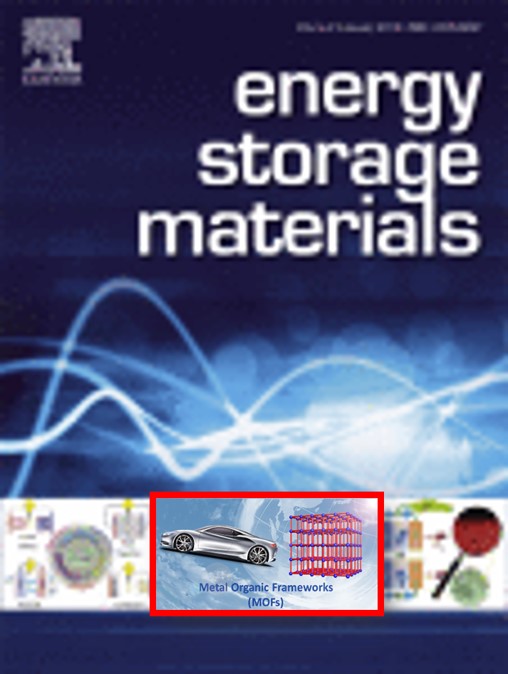 |
Front cover: Metal Organic Framework for Engery Storage and Conversion (Energy Storage Materials., 2/2016) |
| Metal–organic frameworks (MOFs), a novel type of porous crystalline materials, have attracted increasing attention in clean energy applications due to their high surface area, permanent porosity, and controllable structures. MOFs are excellent precursors for the design and fabrication of nanostructured porous carbons and metal oxides, especially for hierarchical nanostructures. In this review, the recent development and understanding of MOFs and MOF-derived nanomaterials in the applications of fuel cells, batteries (e.g. lithium-ion, lithium–sulfur, and lithium–air batteries), and supercapacitors are summarized in detail. Wevalso present the future trends, prospects, and possible obstacles of the development of advanced MOFs and MOF-derived nanomaterials for more promising and large-scale commercial applications of clean energy. | |
| |
|
.jpg) |
Front cover: Controlled SnO2 Effectively Dominating Sodium Storage Performance (Adv. Energy Mater., 2/2016) |
| The exploration of sodium ion batteries (SIBs) is a profound challenge due to the rich sodium abundance and limited supply of lithium on earth. Here, amorphous SnO2/graphene aerogel (a-SnO2/GA) nanocomposites have been successfully synthesized via a hydrothermal methods for use as anode materials in SIBs. The designed annealing process produces crystalline SnO2/graphene aerogel (c-SnO2/GA) nanocomposites. For the first time, the significant effects of SnO2 crystallinity on sodium storage performance are studied in detail. | |
| |
|
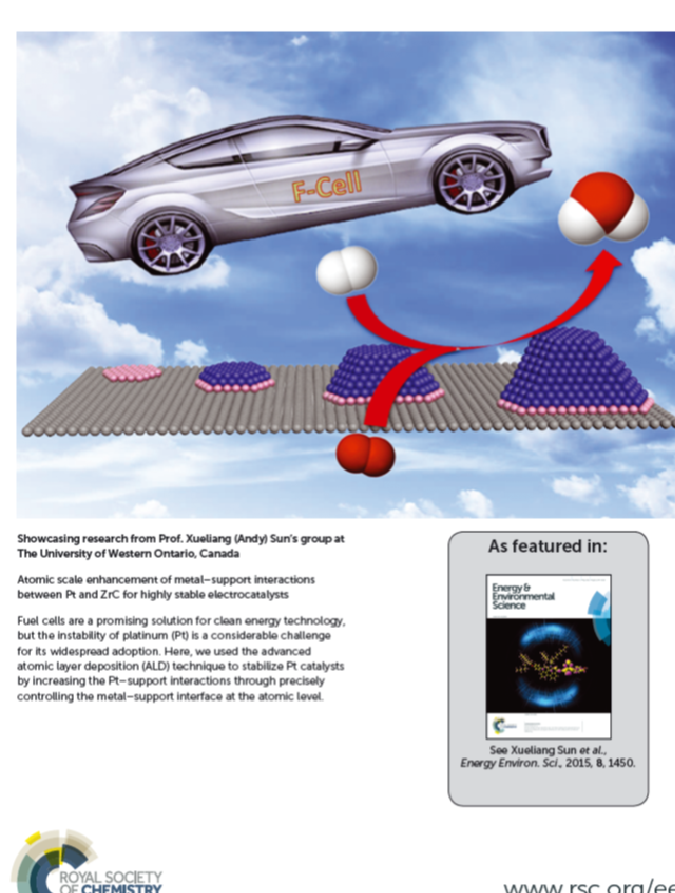 |
Back cover: Atomic Scale Enhancement of Metal-support Interactions between Pt and ZrC for highly Stable Electrocatalysts (Energy Environ. Sci., 8/2015) |
| Fuel cells are a promising solution for clean energy technology, but the instability of platinium (Pt) is a considerable challege for its widespread adoption. Here, we used the advanced atomic layer deposition (ALD) technique to stabilize Pt catalysts by increasing the Pt-support interactions through precisely controlling the metal-support interface at the atomic level. | |
| |
|
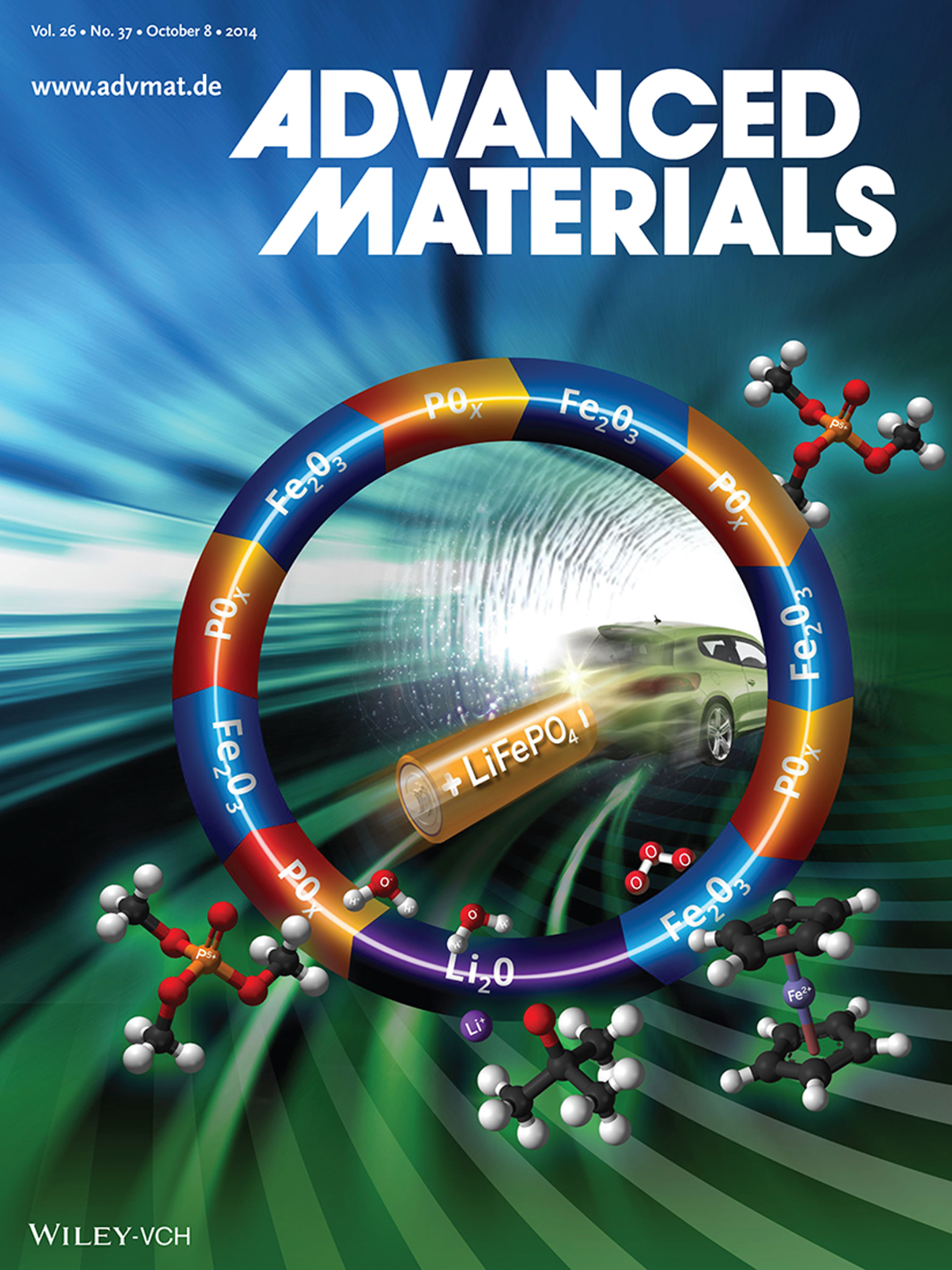 |
Inside front cover: Lithium-Ion Batteries: Rational Design of Atomic-Layer-Deposited LiFePO4 as a High-Performance Cathode for Lithium-Ion Batteries (Adv. Mater. 37/2014) |
| The atomic layer deposition technique is successfully applied to synthesize lithium iron phosphate using rationally designed surface reactions, as demonstrated form the first time by X. Sun and co-workers on page 6472. The lithium iron phosphate exhibits high powder density, excellent rate capability, and ultra-long lifetime, showing great potential in vehicular lithium batteries and 3D all-solid-state microbatteries. | |
| |
|
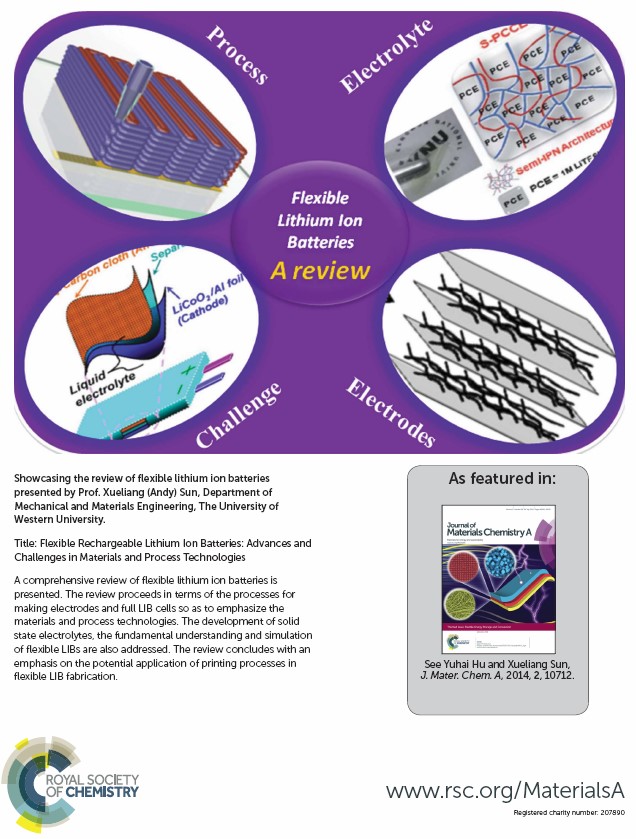 |
Inside back cover: Flexible Rechargeable Lithium Ion Batteries: Advances and Challenges in Materials and Process Technologies. (J. Mater. Chem. A 2 (2014) 10712-10738) |
| Flexible batteries possess several unique features including high flexibility, lightweight and easy portability, high specific power and energy density, and remarkable rate capability, etc. In this review, we systematically summarize the advances in flexible LIBs research, with focus on the development of flexible electrodes. The review proceeds in terms of the processes for making electrodes and full LIB cells so as to emphasize the materials and process technologies. | |
| |
|
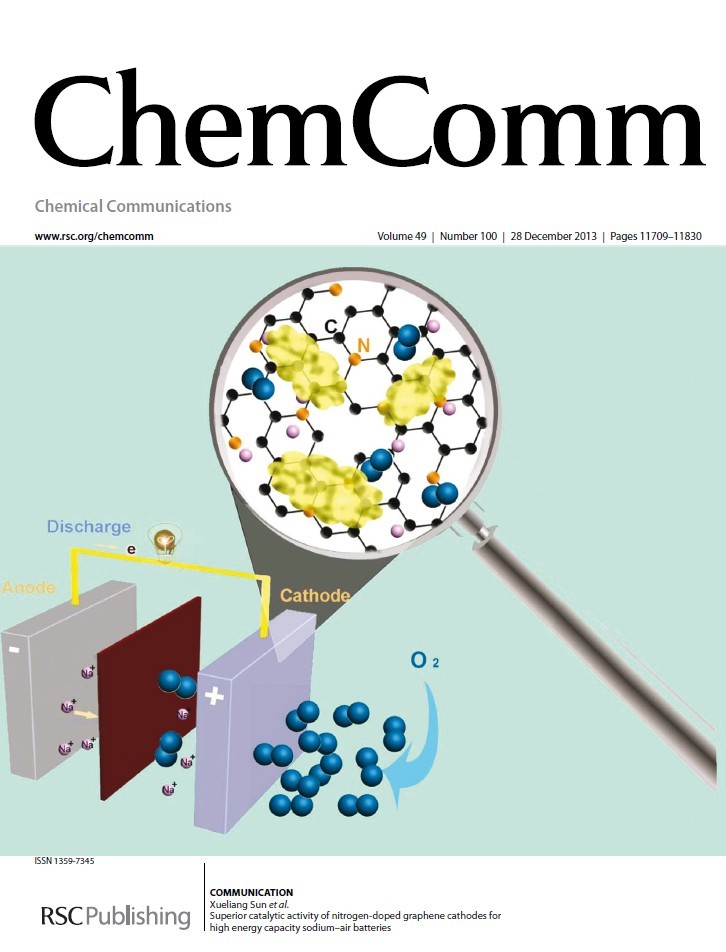 |
Inside front cover: Superior catalytic activity of nitrogen-doped graphene cathodes for high energy capacity sodium-air batteries. (Chem. Comm. 12/2013) ( Page 11710) |
| Nitrogen-doped graphene nanosheets (N-GNSs) displayed a discharge capacity two times greater than their pristine counterpart, as well as superior electrocatalytic activity as a cathode material for sodium–air batteries. The enhanced performance of N-GNSs is attributed to the active sites introduced by nitrogen doping. | |
| |
|
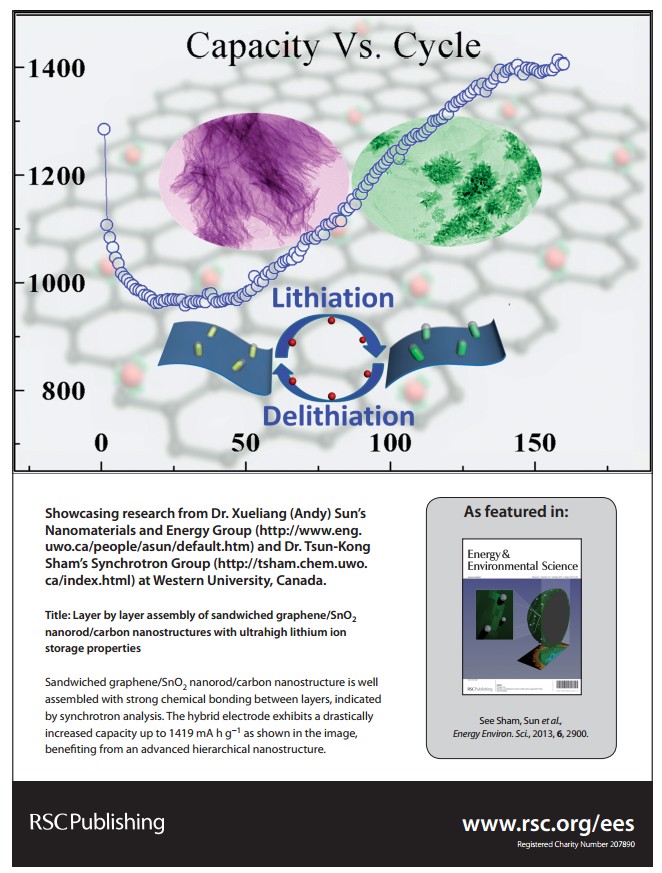 |
Back Cover: Layer by layer assembly of sandwiched graphene/SnO2nanorod/carbon nanostructures with ultrahigh lithium ion storage properties. (Energy Environ. Sci. 5/2013) ( Page 2900) |
| Sandwiched graphene/SnO2 nanorod/carbon nanostructures is well assembled with strong chemical bonding between layers, indicated by synchrotron analysis. The hybrid electrode exhibits a drastically increased capacity up to 1419mAhg-1 as shown in the image, benefiting from an advanced hierarchical nanostructure. | |
| |
|
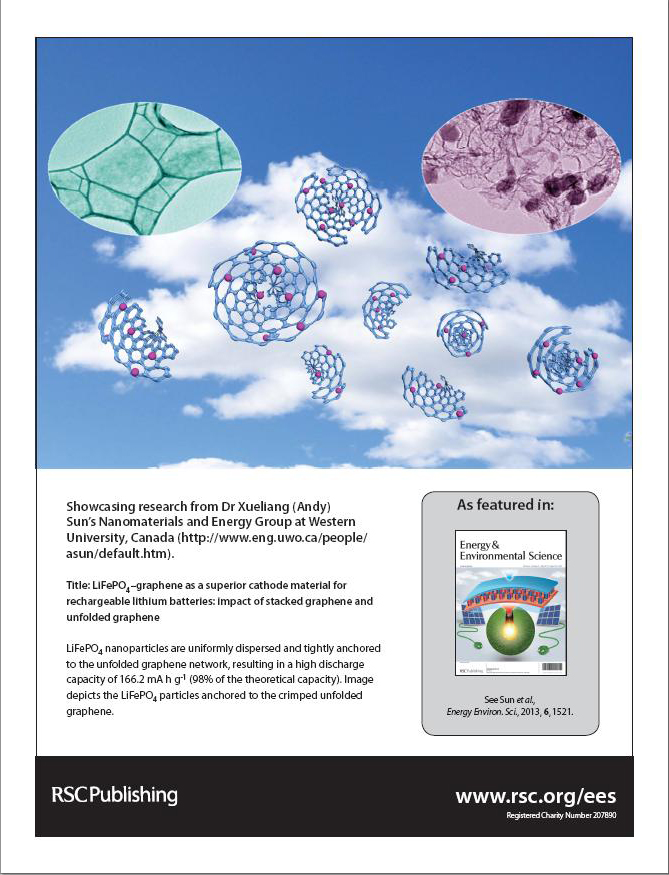 |
Back Cover: LiFePO4–graphene as a superior cathode material for rechargeable lithium batteries: impact of stacked graphene and unfolded graphene. (Energy Environ. Sci. 6/2013) ( Page 1521) |
| LiFePO4 nanoparticles are uniformly dispersed and tightly anchored to the unfolded graphene network, resulting in a high discharge capacity of 166.2 mA h g-1 (98% of the theoretical capacity) with low graphene content of 1.5 wt%. In their paper, X. Sun et al. presented a simple strategy for the synthesis of such LiFePO4nanoparticles attached on the 3D conducting network, which enables both Li ions and electrons to migrate and reach each active particle, then realizing the full potential of active materials. | |
| |
|
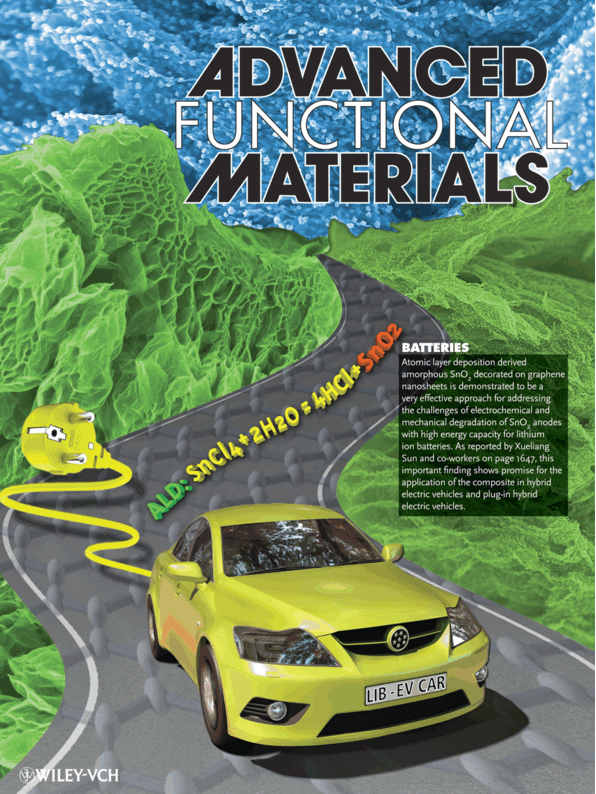 |
Frontispiece: Batteries: Tin Oxide with Controlled Morphology and Crystallinity by Atomic Layer Deposition onto Graphene Nanosheets for Enhanced Lithium Storage (Adv. Funct. Mater. 8/2012) |
| Atomic layer deposition derived amorphous SnO2 decorated on graphene nanosheets is demonstrated to be a very effective approach for addressing the challenges of electrochemical and mechanical degradation of SnO2 anodes with high energy capacity for lithium ion batteries. As reported by Xueliang Sun and co-workers on page 1647, this important finding shows promise for the application of the composite in hybrid electric vehicles and plug-in hybrid electric vehicles. | |
| |
|
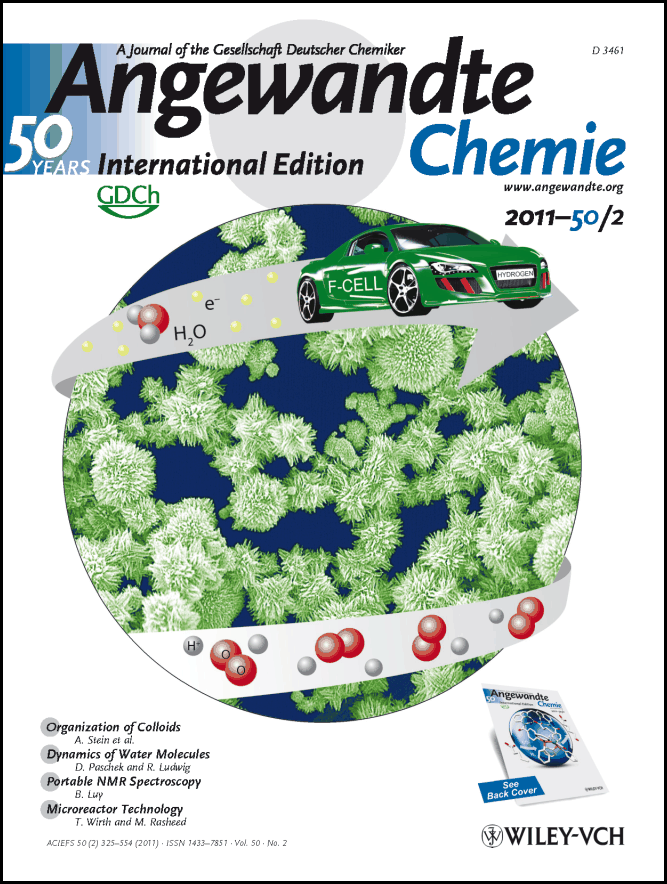 |
Cover Picture: A New Highly Durable Pt Nanocatalyst for PEM Fuel Cells: the Multiarmed Star-like Nanowire Single Crystal. (Angew. Chem. Int. Ed. 2/2011) (Page 422) |
|
The multiarmed star-like platinum nanowires shown are used as a new type of electrocatalyst to address both activity and durability challenges for proton exchange membrane (PEM) fuel cells. In their Communication X. Sun et al. present a very simple strategy for the synthesis of such nanowires on carbon. The activity and durability of the new system is much improved over that of the commercial catalyst made of Pt nanoparticles on carbon supports. |
|
| |
|
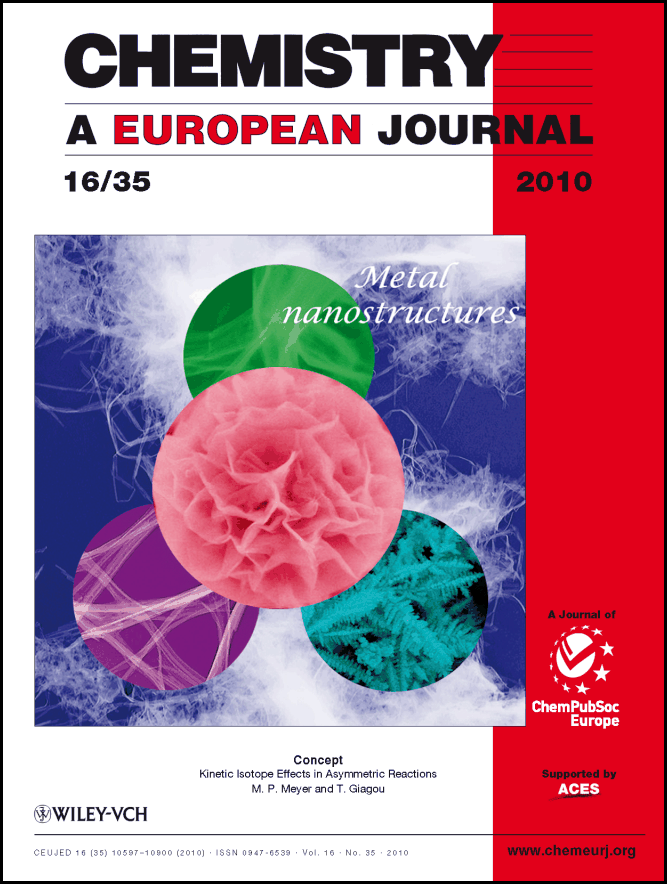 |
Cover Picture: New Insight into the Conventional Replacement Reaction for the Large-Scale Synthesis of Various Metal Nanostructures and their Formation Mechanism. (Chem. Eur. J. 35/2010) (Page 10597) |
|
New insights into a conventional replacement reaction for the large-scale synthesis of various metal nanostructures have been described in the Communication of X. Sun et al.; Further, the growth processes of various metal nanostructures (e.g., Ni) have been systematically investigated, and the key factors in their morphological and structural control have been proposed and discussed in detail. |
|
| |
|
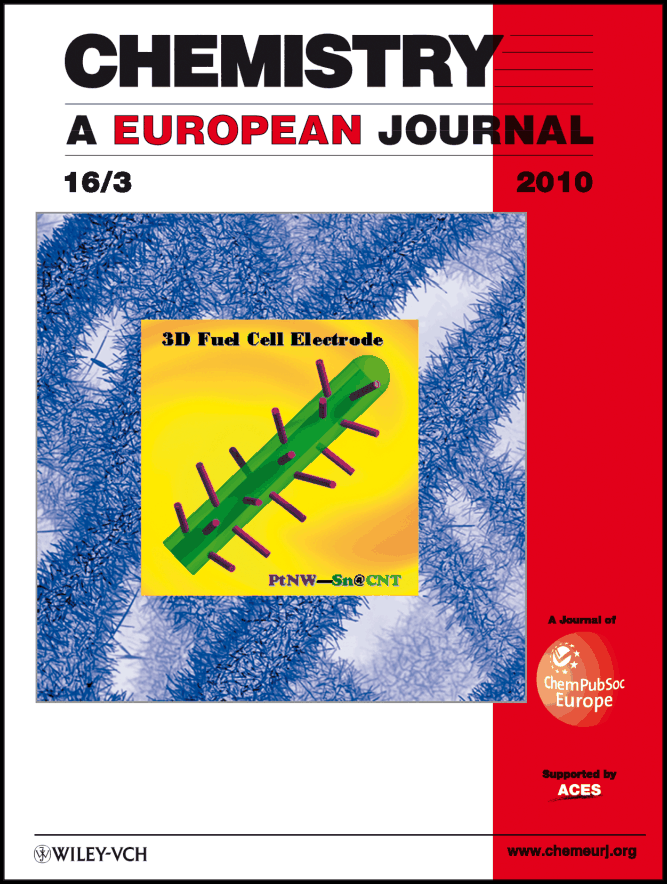 |
Inside Cover: Direct Growth of Single-Crystal Pt Nanowires on Sn@CNT Nanocable: 3D Electrodes for Highly Active Electrocatalysts. (Chem. Eur. J. 3/2010) (Page 732) |
|
A 3D coaxial nanocable electrode consisting of platinum on a tin nanowire and a carbon nanotube support has been prepared by X. Sun et el.; This novel PtNWSn@CNT electrode exhibits exceptional electrochemical performance. |
|
| |
|
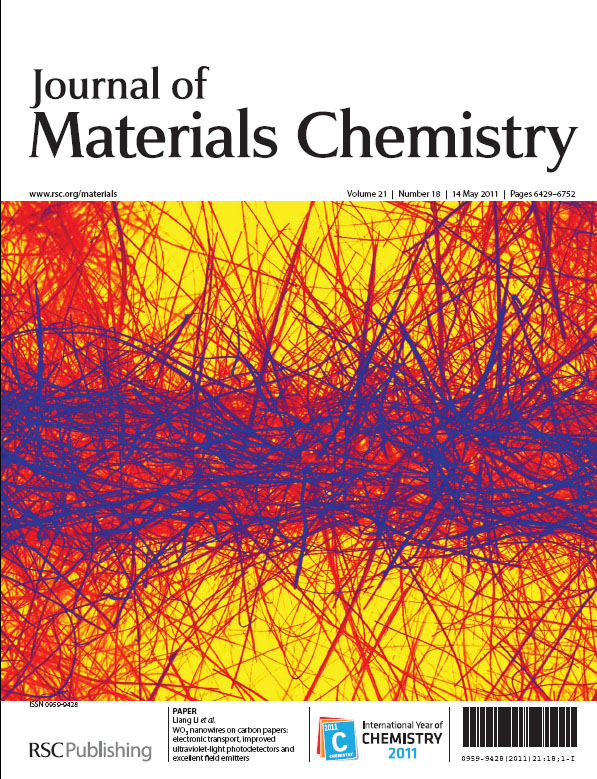 |
Cover Picture: WO3 Nanowires on Carbon Papers: Electronic Transport, Improved Ultraviolet-Light Photodetectors and Excellent Field Emitters. (J. Mater. Chem. 21/2011) (Page 6525) |
|
Single-crystalline WO3 nanowires were synthesized and demonstrated excellent field-emission properties. These results indicate that present unique WO3nanowires on carbon papers are promising candidates for constructing high-performance electronic and optoelectronic devices. *In collaboration with Dr. Liang Li and Profs. Yoshio Bando and Dmitri Golberg in the National Institute for Materials Science, Japan. |
|
| |
|
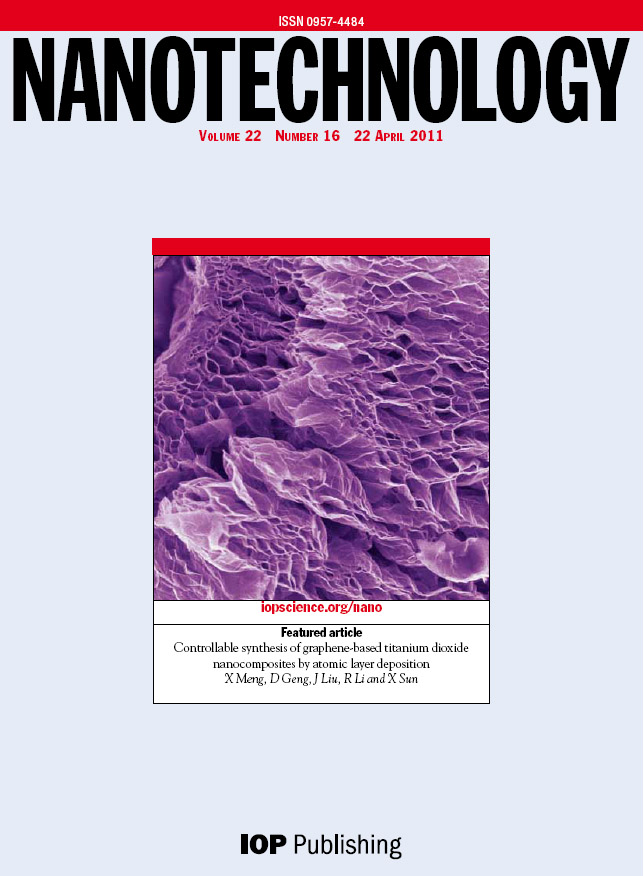 |
Cover Picture: Controllable Synthesis of Graphene-based Titanium Dioxide Nanocomposites by Atomic Layer Deposition. (Nanotechnology 22/2011) (Page 165602) |
|
TiO2/graphene nanocomposites were synthesized by Atomic layer deposition (ALD). The as-deposited TiO2 was tunable in morphologies and structural phases by this technique. The resultant TiO2–GNS nanocomposites have great potentials for many applications, such as photocatalysis, lithium-ion batteries, fuel cells, and sensors. |
|
| |
|